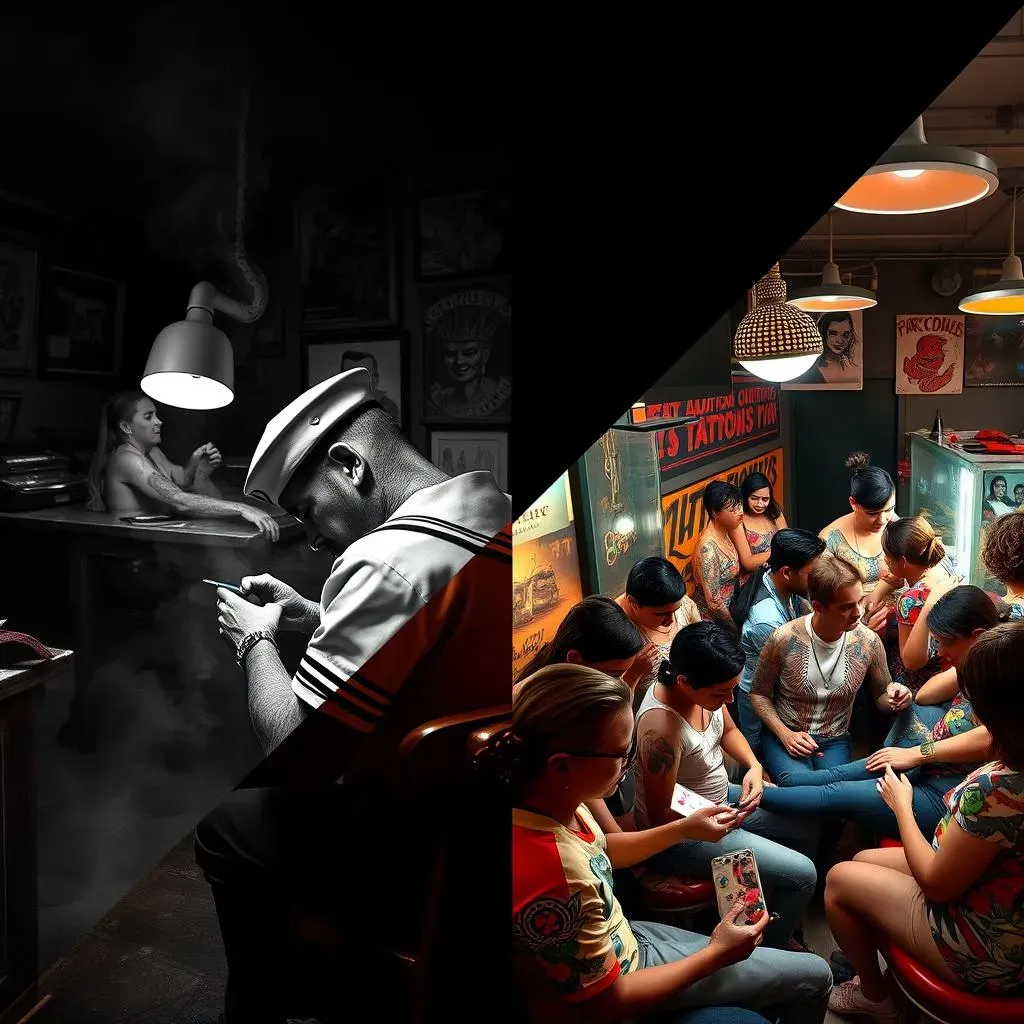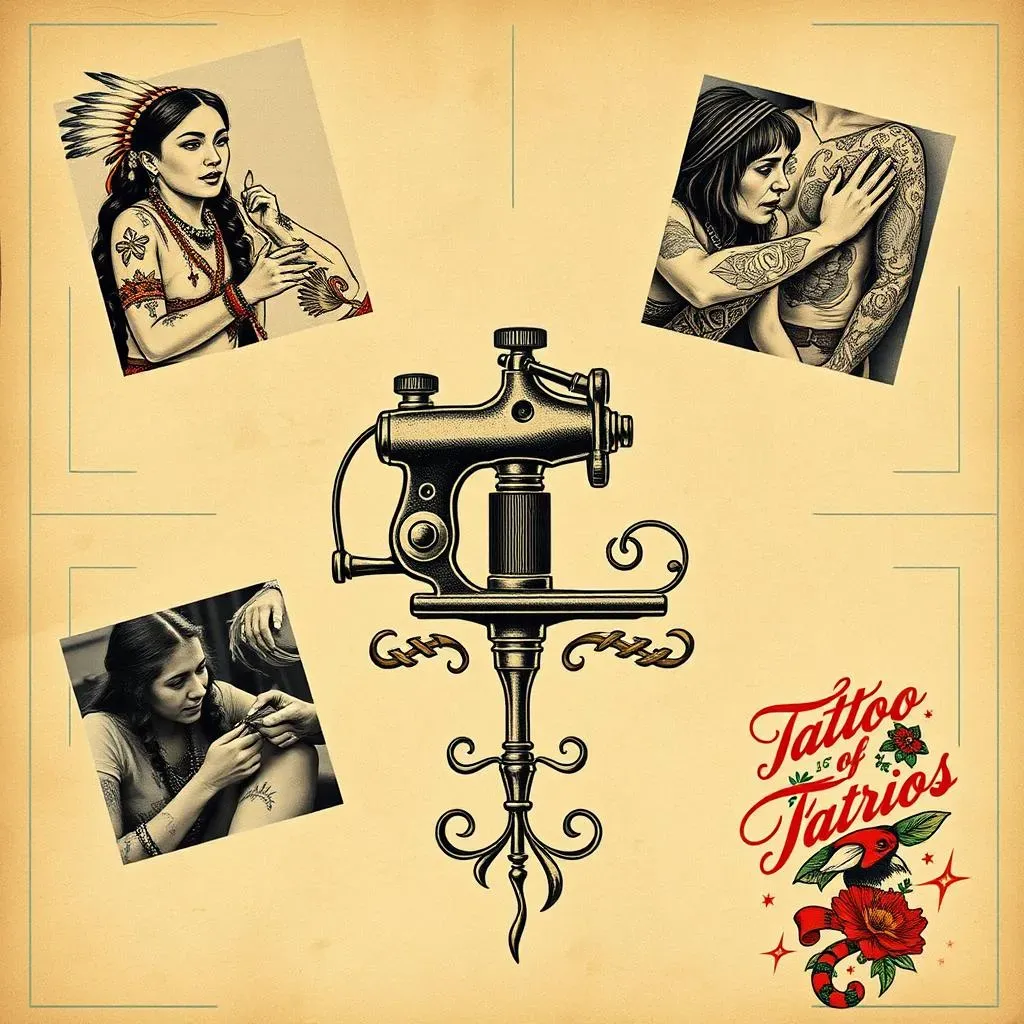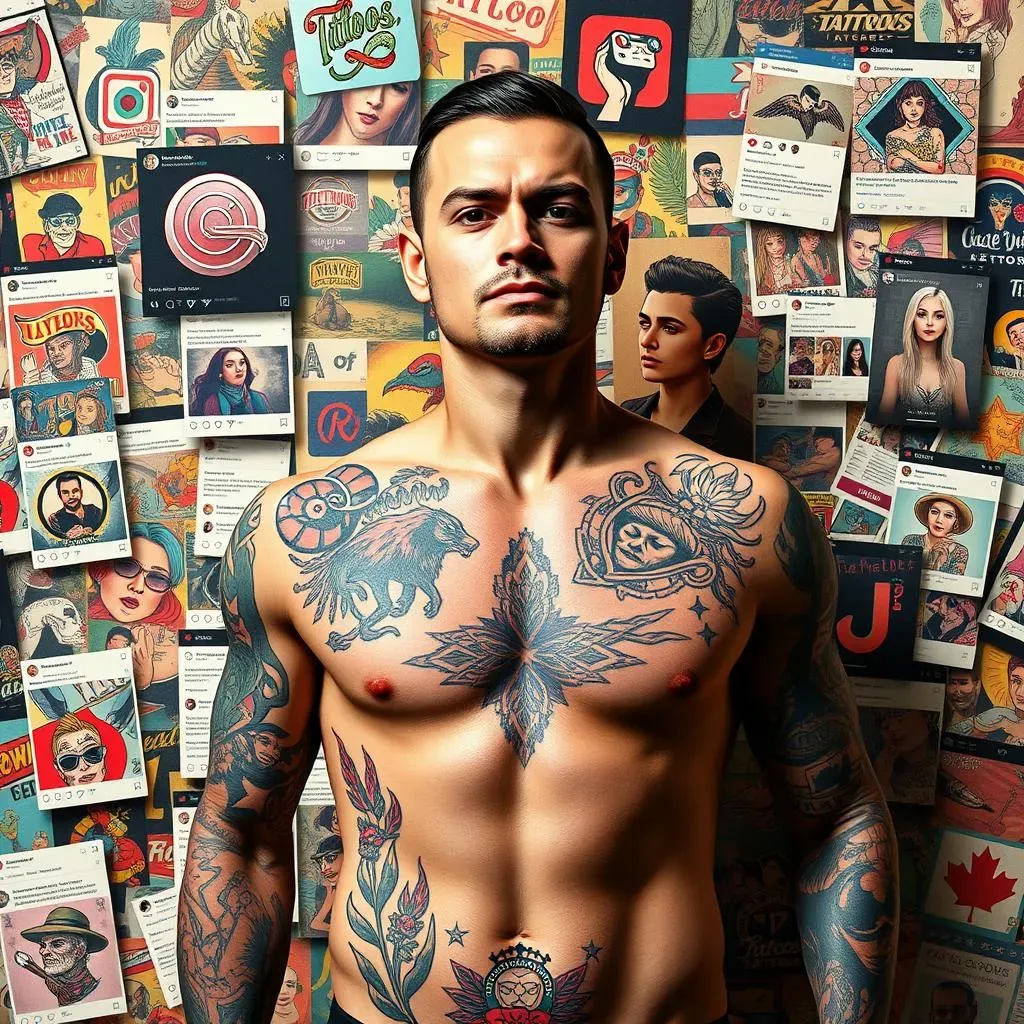Table of Contents
Ever wondered how tattoos went from being a mark of rebellion to a mainstream fashion statement? It seems like everyone's sporting ink these days, but who really kicked off this global phenomenon? This isn't just about a single person; it's about a journey, a shift in culture, and a whole lot of needles. We're going to explore the evolution of tattoos, from their early days in back alleys to their current status as a form of self-expression plastered all over social media. We'll look at key figures who pushed the boundaries, the role of social media in amplifying the trend, and even touch on the growing demand for tattoo removal. So, if you're curious about who started the tattoo trend, buckle up – we're about to take a deep dive into the fascinating world of ink. Prepare to be surprised; it's not as straightforward as you might think.
Tattoos: From Subculture to Mainstream
Tattoos: From Subculture to Mainstream
The Early Days of Ink
Tattoos weren't always the cool thing they are now. Back in the day, they were often associated with sailors, bikers, and people on the fringes of society. I remember seeing old movies, and tattoos were always on the "bad guys." Tattoo parlors were hidden away, not exactly the kind of place you'd bring your grandma. They were a symbol of rebellion, a way to stand out, or maybe to show you'd been around the block a few times. It was a world away from the mainstream, a secret language understood by a select few.
For many years, tattoos were seen as something you got on a dare, or maybe after a few too many drinks. They weren't exactly considered art, more like a permanent mistake you hoped your mom wouldn't notice. The stigma was real, and having visible ink could actually affect your job prospects or how people treated you. It's wild to think about how much that has changed.
The Shift Towards Acceptance
So how did tattoos go from being a mark of the outcast to something everyone wants? Well, it wasn't overnight. It was a slow burn, a gradual shift in how society viewed body art. Celebrities and musicians started sporting tattoos, which helped make them more appealing to the masses. Suddenly, it wasn't just the "bad boys" who were getting inked, but also the pop stars and actors that everyone admired. This really helped break down the old stereotypes, making tattoos seem trendy and accessible.
Also, tattoo artistry itself evolved. We're not just talking about simple, black outlines anymore. Now, you've got incredibly talented artists creating intricate, colorful masterpieces on people's skin. It’s like wearable art, and the quality has made a world of difference. It's moved from some scratchy thing done in a dimly lit room to a serious form of artistic expression.
Factor | Impact on Tattoo Acceptance |
|---|---|
Celebrity Influence | Made tattoos more desirable and fashionable |
Artistic Evolution | Elevated tattoos to a form of art |
Social Media | Showcased tattoos to a wider audience |
Tattoos in the Modern Era
Fast forward to today, and it's hard to find someone who doesn't know someone with a tattoo. Walk down any street, and you'll see people of all ages, backgrounds, and professions sporting ink. It's become a way to express yourself, to tell your story, or just to have something cool on your skin. Social media has also played a massive role in this. People are constantly sharing their tattoos online, which has further normalized the practice and made it more mainstream. It's like a giant online gallery of body art.
Now, it's not unusual to see teachers, doctors, and even grandparents with tattoos. The stigma has largely disappeared, and it's become accepted as a form of personal expression. It's funny how things change, isn't it? What was once a sign of rebellion is now a way to fit in, or at least, not stand out in a bad way. It just goes to show, nothing stays the same forever, especially not fashion trends.
The Pioneers Who Shaped the Tattoo Trend
The Pioneers Who Shaped the Tattoo Trend
The Early Innovators
When we talk about who started the tattoo trend, it's not one single person, but a group of innovators who pushed the boundaries. Think of them as the OG tattoo artists, the ones who laid the groundwork for what we see today. Before the fancy tattoo machines, there were people like Samuel O'Reilly, who patented the first electric tattoo machine in the late 1800s, which was a game-changer. It made tattooing faster and more precise. But even before that, there were indigenous cultures around the world that had been practicing tattooing for centuries. Their techniques and designs, often passed down through generations, laid the foundation for modern tattooing. It's a really interesting mix of tradition and innovation.
These early innovators weren't just artists; they were also inventors, risk-takers, and cultural ambassadors. They had to fight against societal norms and prejudices to make their mark, literally and figuratively. They experimented with different techniques, inks, and designs, all while trying to make a living in a world that didn't always appreciate their craft. They really had to be passionate about what they were doing, because it wasn't exactly a glamorous career at the time.
The Modern Movement
The modern tattoo movement really took off in the mid-20th century, with figures like Lyle Tuttle in San Francisco. He tattooed Janis Joplin and other rock stars, which brought tattoos into the spotlight. He wasn't just doing the old sailor designs; he was creating new styles and pushing the artistic boundaries of tattoos. And then you have Ed Hardy, who took Japanese tattooing styles and merged them with American traditional, creating a whole new look. These guys were like rockstars in the tattoo world, paving the way for the artists we know and love today.
It wasn't just about the artists, though. It was also about the people who wore the tattoos, the ones who dared to be different and challenge the status quo. They were the walking canvases, the ones who helped to normalize tattoos and make them more acceptable in mainstream society. They really helped to change the game, one tattoo at a time. It's amazing to see how far it's come.
Pioneer | Contribution |
|---|---|
Samuel O'Reilly | Patented the first electric tattoo machine |
Lyle Tuttle | Popularized tattoos among rock stars |
Ed Hardy | Merged Japanese and American tattoo styles |
The Rise of Tattoo Culture
So, while it's hard to pinpoint one single person who "started" the tattoo trend, it's clear that a lot of individuals played a huge part in shaping it. These pioneers weren't just about the art of tattooing, but also about the culture. They created a community, a place where people could express themselves and connect with others who shared their passion for ink. They helped to make tattoos more than just a mark on the skin, but a form of self-expression and identity.
The influence of these pioneers continues to this day. Tattoo artists still draw inspiration from their work, and their legacy is felt in every tattoo parlor around the world. It's a reminder that trends don't just appear out of nowhere, but are shaped by the vision and dedication of those who came before us. They took something that was once considered taboo and turned it into a form of art that is now celebrated worldwide. Pretty cool, right?
How Social Media Fueled the Tattoo Trend
How Social Media Fueled the Tattoo Trend
The Rise of Tattoo Sharing
so we've talked about the pioneers, but social media? That's where things really exploded. Platforms like Instagram and Pinterest became giant tattoo galleries, and suddenly, everyone could see what was happening in the tattoo world. It wasn't just about the local tattoo shop anymore; it was about seeing incredible art from all over the globe. People started sharing their own ink, and it created this massive wave of inspiration. It was like a visual feast, where you could scroll through endless designs and find something that really spoke to you.
Before, you might have only seen tattoos on your biker uncle or that one person at the beach. But now, they were everywhere online, beautifully photographed and styled. It made tattoos feel more accessible, less intimidating, and definitely more desirable. It was a total game-changer for the industry, and I think that's why so many people, especially younger generations, started getting into it.
Influencers and Tattoo Culture
Then came the influencers, and things went into overdrive. When you see your favorite celebrity or social media star rocking a cool tattoo, it's hard not to feel inspired. It's like a stamp of approval, making tattoos seem even more mainstream and trendy. Influencers are great at showcasing tattoos in a way that makes them look stylish, unique, and totally cool. It's not just about the tattoo itself, but the whole vibe, the lifestyle associated with it.
This has led to a lot of people getting tattoos that are inspired by what they've seen online. It's like a constant cycle of inspiration, with people creating new designs and then sharing them for others to see. This has not only fueled the trend but also helped to evolve tattoo styles and techniques. It's a really fascinating development, and it's amazing how quickly it's all happened.
Social Media Platform | Impact on Tattoo Trend |
|---|---|
Visual showcase of tattoo art | |
Platform for tattoo inspiration and design ideas | |
TikTok | Spread of tattoo trends through short videos |
The Democratization of Tattoo Art
What's really cool about social media is that it's democratized tattoo art. Now, you don't have to live in a big city to find a talented tattoo artist. You can browse their work online, see their style, and even book appointments from anywhere in the world. This has made tattoo art more accessible to people, and it's also helped to create a global community of tattoo lovers. It's like a giant network of artists and enthusiasts, all connected through the power of the internet.
It's also given a platform to lesser-known artists, who might not have had the same opportunities before. They can showcase their skills, build a following, and connect with clients. Social media has really leveled the playing field, and it's helped to create a more diverse and vibrant tattoo culture. Plus, it's just fun to see all the amazing art that's out there. I mean, some of these tattoo artists are seriously next-level.
The Future of Ink: Tattoo Removal and Shifting Trends
The Future of Ink: Tattoo Removal and Shifting Trends
The Rise of Tattoo Regret
so tattoos are super popular, but what happens when people start to regret that dragon on their back or their ex's name on their arm? Turns out, tattoo removal is becoming a big thing. I mean, it makes sense, right? People change, trends change, and sometimes that awesome tattoo you got at 18 just doesn't quite fit your life anymore. I remember my friend getting a huge tribal tattoo, and now he's all about minimalist designs. It's like, what do you do with all that old ink?
That's where laser tattoo removal comes in. It's not like it was years ago, where you'd have to get a painful, messy procedure. Now, the technology is so much better, and it's a lot more effective. It's not exactly a walk in the park, but it's definitely a viable option for people who want to get rid of their old ink. It's kind of funny to think about how we're now spending money to erase what we spent money to create. The irony isn't lost on me.
Laser Technology and Changing Trends
The advancements in laser tattoo removal are pretty wild. We're not talking about some old-school laser pointer; we're talking about sophisticated machines that can target the specific colors of the ink without damaging the surrounding skin. It's like magic, but with science, of course. This has made the process safer and more effective, and it's also opened up the possibility of removing even the most stubborn tattoos. And get this, some people are even getting tattoos removed to make room for new ones. The idea of tattoos as a temporary art form feels pretty new, doesn't it?
It's also interesting to see how trends are changing. People are moving away from big, bold tattoos and embracing more minimalist designs, or even opting for no tattoos at all. It's like the pendulum is swinging back. The rise of tattoo removal shows that tattoos aren't necessarily a permanent commitment anymore. They're more like a form of self-expression that can be changed or removed as you evolve. It's a really interesting concept, and it makes me wonder what the future of tattoos will look like.
Aspect | Trend |
|---|---|
Tattoo Removal | Increased demand for laser removal |
Tattoo Styles | Shift towards minimalist designs |
Permanence | Tattoos viewed as a temporary form of self-expression |
The Future of Ink
So what does the future hold for tattoos? Will we all be walking around with blank canvases again? Probably not. I think tattoos will always be a form of self-expression, but they might be more fluid and adaptable than they are now. Maybe we'll see more temporary tattoos, or even tattoos that can change color or design. The possibilities are endless, and it's exciting to think about what's coming next. It's like we're just at the beginning of this whole tattoo journey.
It's a crazy world we live in, where something that was once permanent is now easily removed. The story of tattoos is a story of change, of cultural shifts, and of personal expression. It's a reminder that nothing stays the same forever, and that trends are always evolving. So whether you're thinking about getting a new tattoo, removing an old one, or just admiring the art, it's always good to remember that we're all part of this ever-changing story. And who knows, maybe in a few years, we'll all be getting our tattoos printed on like temporary stickers. It's a wild ride, that's for sure.
The Ever-Evolving Story of Ink
So, did we find the single person who started the tattoo trend? Not exactly. It's more like a relay race, with many influential figures and cultural shifts contributing to the widespread popularity we see today. From the rebellious acts of early tattoo artists to the social media influencers flaunting their ink, the journey of tattoos is a fascinating story of acceptance and self-expression. And while tattoos may feel permanent, the increasing demand for removal services shows that even body art is subject to the winds of change. The story of tattoos is far from over; it's an ongoing narrative that continues to be written on our skin, one needle prick at a time.